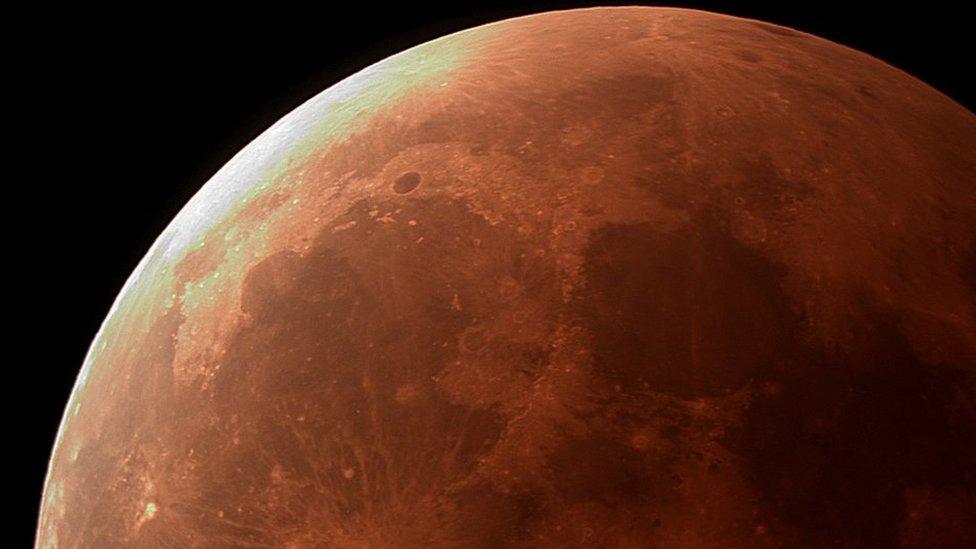Where can you see Friday's 'blood moon'?
- Published
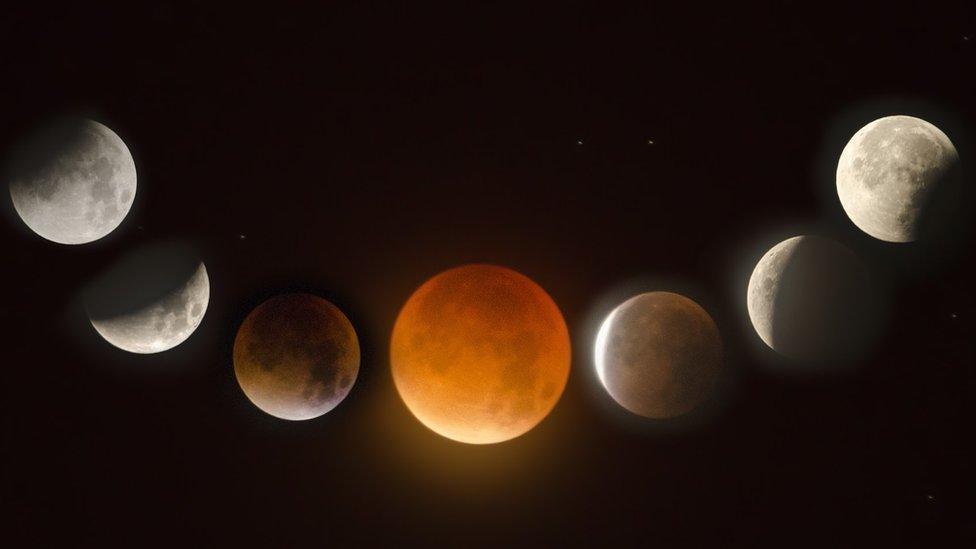
During a blood moon, the colour appears to change as the Moon is illuminated by light which has passed through Earth's atmosphere and then bent back towards the Moon by refraction
A few places in Northern Ireland may be lucky enough to see a so-called blood moon on Friday night.
The reddish moon, if it appears, will be the effect of a total lunar eclipse - when the Earth passes between the Sun and the Moon.
It will cast the Moon into shadow for one hour and 43 minutes, during which its colour will appear to be anything from orange to a deep crimson.
Just how red it will be will depend on the atmosphere at the time.
The "blood moon" effect is due to the visual effect generated when sunlight filters into the atmosphere and the colours orange and red are projected onto the Moon.
In addition, during Friday's eclipse, the Moon will be at its "apogee" - the point farthest from the Earth.

How does the Moon turn red?
A lunar eclipse happens when the Sun, Earth and Moon are aligned, so the Moon enters the shadow created by Earth
In a total lunar eclipse, the alignment is perfect, so the planet blocks the Moon's sunlight
During a total eclipse, the Moon can look a bright reddish orange colour, referred to as a blood Moon
The colour appears to change as the Moon is being illuminated by light which has passed through the Earth's atmosphere and then bent back towards the Moon by refraction

Friday's eclipse is the first to be visible from Ireland since September 2015 and will be the longest of this century.
"However, we won't see all of this eclipse, as the Moon will already be deep in the shadow as it rises above the horizon from Ireland," said a spokesperson for the Irish Astronomical Association.
"The maximum of the eclipse occurs at 21.21 BST, but the upper edge of the Moon won't rise from Belfast until 21:27 BST.
"The total stage of the eclipse will end at 22.13 BST, and by then the Moon will have risen to an altitude of only four degrees, or just about eight times its own diameter, above the south-east horizon," he added.

Analysis:
By Geoff Maskell, BBC News NI Weather
We've had some beautiful nights for stargazing this week. Unfortunately Friday is not one of them.
For weeks, we've had high pressure giving us a very settled feel to our weather. When it was at its strongest and centred directly over Ireland a few weeks ago, the skies were almost cloudless.
Now for the first time in weeks, we're seeing that high pressure finally break down and some more unsettled Atlantic weather move in from the west.
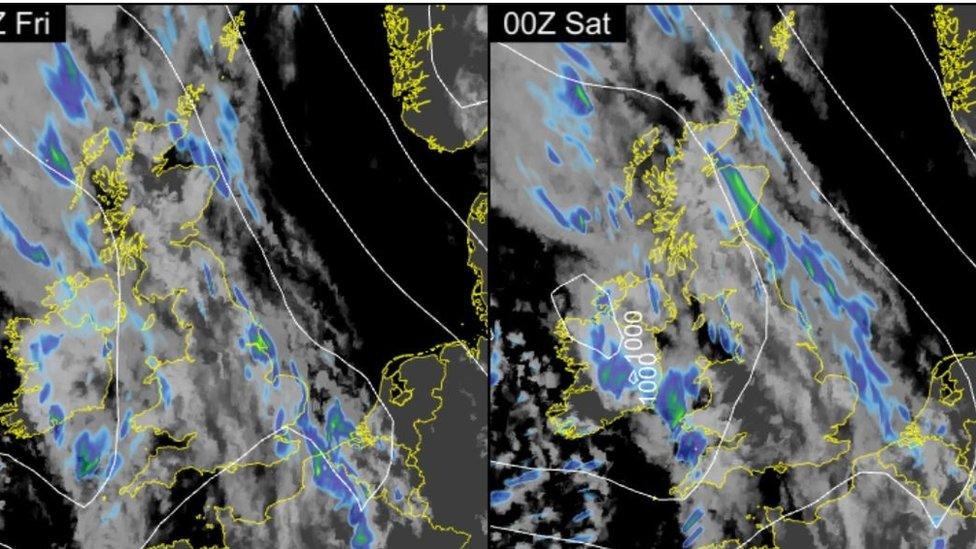
A series of weather fronts, all driven by an area of low pressure tracking to the North West are forecast to bring cloud, wind and rain across Northern Ireland through Friday night and the weekend.
It means that star gazers hoping to witness the lunar eclipse are likely to be disappointed.
The odds of a clear view are not good anywhere, although the chances of some clear spells may be best across the east coasts of Counties Antrim and Down, but I wouldn't hold out too much hope.

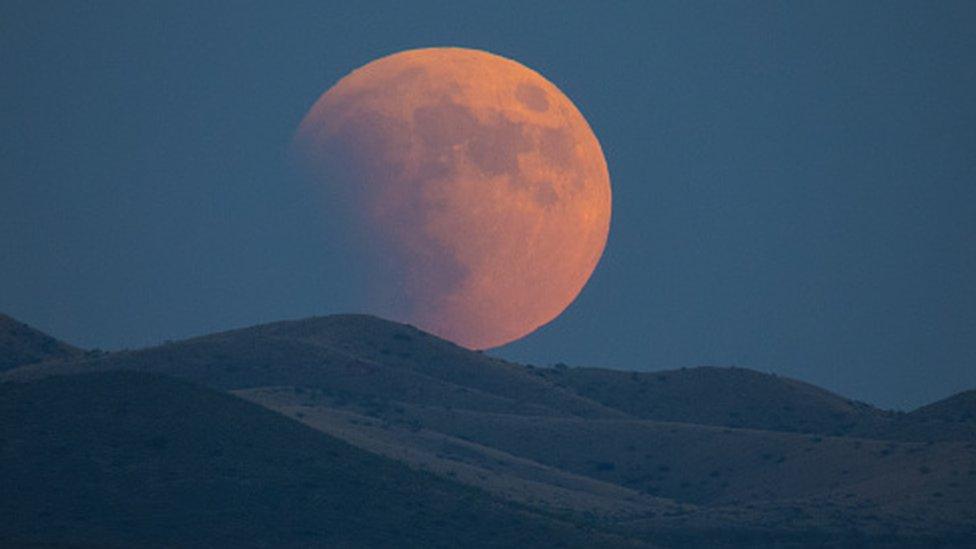
A spectacular 'super blood moon' in Tombstone, Arizona
"So you need to get as clear a view to the south-east as possible, where the Moon will be deepest in eclipse as it rises."
The Irish Astronomical Association is holding two public viewing events for the eclipse:, external
At Knockagh War Memorial Monument on the hill overlooking Greenisland, County Antrim
At the car park on Scrabo Hill, near Newtownards in County Down

Are you hoping to catch a glimpse of the lunar eclipse or the blood Moon tonight? Send your photos to yourpics@bbc.co.uk, external
Please include a contact number if you are willing to speak to a BBC journalist. You can also contact us in the following ways:
WhatsApp: +44 7555 173285
Tweet: @BBC_HaveYourSay, external
Send an SMS or MMS to 61124 (UK) or +44 7624 800 100 (international)
Please read our terms & conditions and privacy policy
- Published28 July 2018
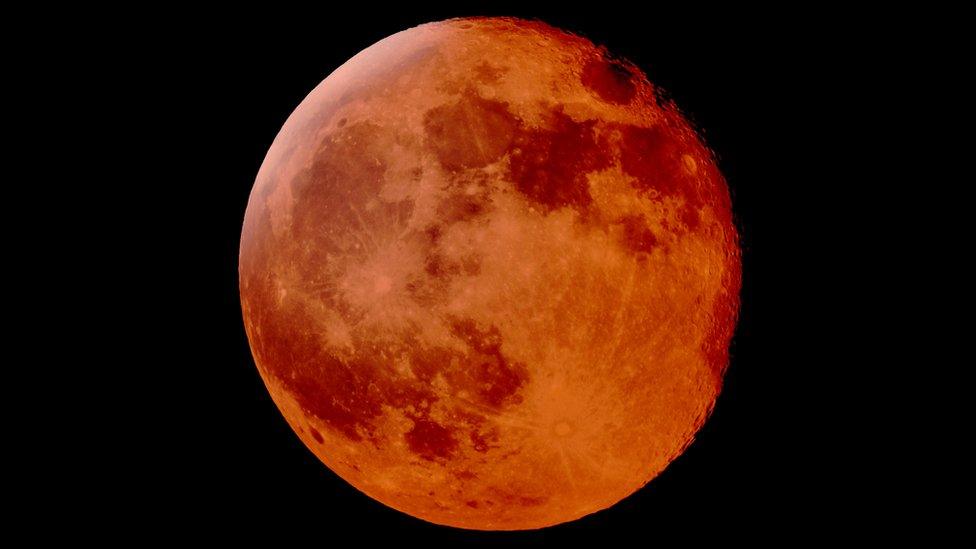
- Published28 July 2018
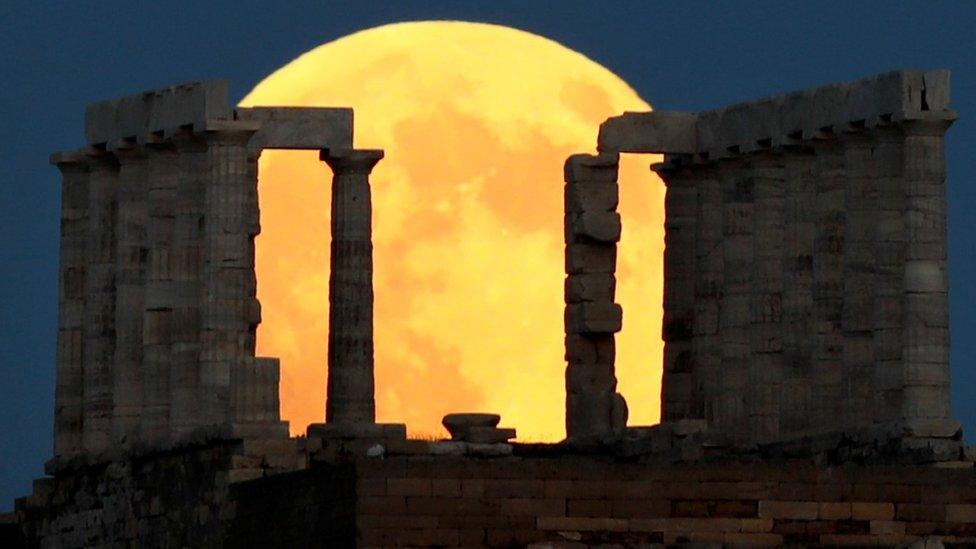
- Published1 February 2018
- Published10 October 2014
